Teakun is called the king of timber that belongs to the Verbensee family. Its scientific name is Tactona Grandis. Its tree is too long and produces good variety of wood. That’s why it’s good demand in the country and abroad market. The goods made from teak are of good quality and last for more days. So there is a huge demand in both the house and office of furniture made of teak wood. The whole world has become the most important part of the life of the people. For commercial use, it is usually cultivated a good variety of teak which can be reduced to low risk. About 1
There are several types of teakwood in India-
- November (Malabar)
- Southern and Central American Teak
- Western African Teak
- Adilabad Saagun
- God’s Day
- Kannada Sagaun
Weather suitable for cultivation of teak –
Moisture and tropical environments are essential for teak. It tolerates much temperature easily. But the highest 39 to 44 degrees centigrade and the lowest 13 to 17 degrees centigrade is suitable for better growth of teak. It has good yields in the rainy area from 1200 to 2500 millimeters. It also plays an important role in rain, moisture, soil as well as illumination and temperature for its cultivation.
Role of Soil in Teak Farming-
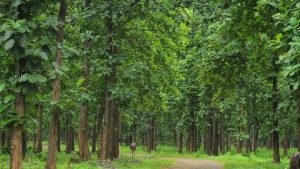 The best yields of teakun are in a hyacinated soil with lime-stone, sheath, shell, husk and some volcanic rocks such as basalt. At the same time, the yields in dry sand, peeling, acidic (6.0pH) and porous soils are badly affected. Soil PH i.e. the amount of acidity in the soil determines the area and growth of cultivation. The range of soy pH is wide in the forest of Saagun, which is between 5.0-8.0 to 6.5-7.5.
The best yields of teakun are in a hyacinated soil with lime-stone, sheath, shell, husk and some volcanic rocks such as basalt. At the same time, the yields in dry sand, peeling, acidic (6.0pH) and porous soils are badly affected. Soil PH i.e. the amount of acidity in the soil determines the area and growth of cultivation. The range of soy pH is wide in the forest of Saagun, which is between 5.0-8.0 to 6.5-7.5.
Role of Calcium in Teak cultivation-
Potassium, phosphorus, potassium, nitrogen and organic elements rich soil is extremely beneficial for teak. Many research results show that the greater amount of calcium is extremely important for the development and length of the teakun. That’s why Teakun has been named as the Calkerius species. The amount of calcium plays an important role in determining where the cultivation of teakun is. As well as where the quantity of sugar is higher, it proves that the more calcium there is. In the wild areas where the nursery is installed is extremely fertile and does not need to mix manure separately.
Nursery in teasing plantropan
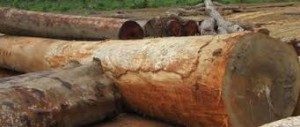 सागौन की नर्सरी के लिए हल्की ढाल युक्त अच्छी सूखी हुई बलुई मिट्टी वाला क्षेत्र जरूरी होता है। नर्सरी की एक क्यारी 1.2 मीटर की होती है। इसमे0.3 मी.से 0.6मी की जगह छोड़ी जाती है। साथ ही क्यारियों की लाइन के लिए 0.6 से 1.6 मी. की जगह छोड़ी जाती है। एक क्यारी में 400-800 तक पौधे पैदा होते हैं। इसके लिए क्यारी की खुदाई होती है। इसे करीब 0.3 मी. तक खोदा जाता है और जड़, खूंटी और कंकड़ को निकाला जाता है। जमीन पर पड़े ढेले को अच्छी तरह तोड़ कर मिला दिया जाता है। इस मिट्टी को एक महीने के लिए खुला छोड़ दिया जाता है और उसके बाद उसे क्यारी में बालू और ऑर्गेनिक खाद के साथ भर दिया जाता है। नमी वाले इलाके में जल जमाव को रोकने के लिए जमीन के स्तर से क्यारी को 30 सेमी तक ऊंचा उठाया जाता है। सूखे इलाके में क्यारी को जमीन के स्तर पर रखा जाता है। खासकर बेहद सूखे इलाके में जहां 750 एमएम बारिश होती है वहां पानी में थोड़ी डूबी हुई क्यारियां अच्छा रिजल्ट देती है। एक मानक क्यारी से जो कि 12 मी. की होती है उसमे करीब 3 से 12 किलो बीज इस्तेमाल होता है। वहीं, केरल के निलांबुर में करीब 5 किलो बीज का इस्तेमाल होता है।
सागौन की नर्सरी के लिए हल्की ढाल युक्त अच्छी सूखी हुई बलुई मिट्टी वाला क्षेत्र जरूरी होता है। नर्सरी की एक क्यारी 1.2 मीटर की होती है। इसमे0.3 मी.से 0.6मी की जगह छोड़ी जाती है। साथ ही क्यारियों की लाइन के लिए 0.6 से 1.6 मी. की जगह छोड़ी जाती है। एक क्यारी में 400-800 तक पौधे पैदा होते हैं। इसके लिए क्यारी की खुदाई होती है। इसे करीब 0.3 मी. तक खोदा जाता है और जड़, खूंटी और कंकड़ को निकाला जाता है। जमीन पर पड़े ढेले को अच्छी तरह तोड़ कर मिला दिया जाता है। इस मिट्टी को एक महीने के लिए खुला छोड़ दिया जाता है और उसके बाद उसे क्यारी में बालू और ऑर्गेनिक खाद के साथ भर दिया जाता है। नमी वाले इलाके में जल जमाव को रोकने के लिए जमीन के स्तर से क्यारी को 30 सेमी तक ऊंचा उठाया जाता है। सूखे इलाके में क्यारी को जमीन के स्तर पर रखा जाता है। खासकर बेहद सूखे इलाके में जहां 750 एमएम बारिश होती है वहां पानी में थोड़ी डूबी हुई क्यारियां अच्छा रिजल्ट देती है। एक मानक क्यारी से जो कि 12 मी. की होती है उसमे करीब 3 से 12 किलो बीज इस्तेमाल होता है। वहीं, केरल के निलांबुर में करीब 5 किलो बीज का इस्तेमाल होता है।
Methods of transplanting teas
It is sowed by spreading or stripping and gradual or debilizing manner by placing 5 to 10 per cent apart. Sowing is more beneficial in a gradual or debilitating manner. Well and firmly grows. Usually the ears do not need a cessary shed. Siva is very dry terrain where irrigation does not need much. In such a situation, there is no weeding.
Significance of Place in Teak Ropan-
Teak plant should be between 2m x 2m, 2.5m x 2.5m or 3m x 3m. It can also be planted with other crops, but it is necessary to keep gaps or gaps of 4m x 4m or 5m x 1m.
Preparation and cultivation and precautions of ground in Teak Ropan-
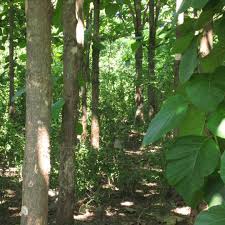 The place for the plantation of teakun is wide or light slope (which has a good watering system). The soil consisting of the shell and the shist is good for teak. The aquaculture area is considered very good for the good edge of the teak. There is no good for the plant of Laterite or its gravel, smooth soil, black cotton soil, sandal and gravel greens. A good mobilization of the entire ground for plantation, it is necessary to do in a level. The pit digging is necessary in a stature at the right distance in the place of plantation. Some essential things for Teak Ropan-
The place for the plantation of teakun is wide or light slope (which has a good watering system). The soil consisting of the shell and the shist is good for teak. The aquaculture area is considered very good for the good edge of the teak. There is no good for the plant of Laterite or its gravel, smooth soil, black cotton soil, sandal and gravel greens. A good mobilization of the entire ground for plantation, it is necessary to do in a level. The pit digging is necessary in a stature at the right distance in the place of plantation. Some essential things for Teak Ropan-
- Use pre-germinated pegs or poly pot
- Excavator the pit of 45cm x 45cm x 45cm. Re-insert masala in the soil, compost of the agricultural sector and insecticide. Also
Add good soil containing organic manure in the lost pit of gravel terrain.
- Mix 100 grams of manure in the pit during plantation and then mix the manure in different quantities, given the soil fertility
- The best season for the cultivation of teakun is monsoon, especially the first rain time
- For the good edge of the plant should also continue to work in the middle-beach, once a year, twice a second year and once a third year is sufficient.
- After planting, finalize the soil preparation and arrange irrigation where necessary.
- Working to remove weeds in early years ensures good edge of the teak.
Weed Control
It is very important to pay attention to weed control over the early two-three years of plauscitation of teak. The campaign to remove the stool at regular intervals should continue. These campaigns are necessary to run well twice a second year and once a third year, three times a year ago. It is important to note that Teakun is a tree of a species that requires sufficient sunlight for growth and development.
Technology of Irrigation in Teak Farming-
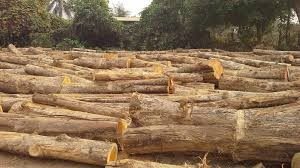 शुरुआती दिनों में पौधे की वृद्धि के लिए सिंचाई बेहद अहम है। खर-पतवार नियंत्रण के साथ-साथ सिंचाई भी चलती रहनी चाहिए जिसका अनुपात 3,2,1है। इसके साथ ही मिट्टी का भी काम चलते रहना चाहिए। अगस्त और सितंबर महीने में दो बार खाद डालना चाहिए। लगातार तीन साल तक प्रत्येक पौधे में 50 ग्राम एनपीके (15:15:15) डाला जाना चाहिए। नियमित तौर पर सिंचाई और पौधे की छंटाई से तने की चौड़ाई बढ़ जाती है। ये सब कुछ पौधे के शीर्ष भाग के विकास पर निर्भर करता है जैसे कि प्रति एकड़ वृक्षों की संख्या में कमी। दूसरे शब्दों में अधिक ऊंचाई वाले पौधे लेकिन कम संख्या या फिर कम ऊंचाई वाले पौधे लेकिन संख्या ज्यादा। सिंचाई सुविधायुक्त सागौन के पेड़ तेजी से बढ़ते हैं लेकिन वहीं, रसदार लकड़ी की मात्रा बढ़ जाती है। ऐसे में पौधे का तना कमजोर हो जाता है और हवा से इसे नुकसान पहुंचता है। ऐसे में पौधे में पानी के फफोले बनने लग जाते हैं। ऐसे पेड़ बाहर से दिखने में मजबूत दिखते हैं लेकिन पानी के जमाव की वजह से पैदा हुए फंगस की वजह से अंदर से खोखला हो जाता है।
शुरुआती दिनों में पौधे की वृद्धि के लिए सिंचाई बेहद अहम है। खर-पतवार नियंत्रण के साथ-साथ सिंचाई भी चलती रहनी चाहिए जिसका अनुपात 3,2,1है। इसके साथ ही मिट्टी का भी काम चलते रहना चाहिए। अगस्त और सितंबर महीने में दो बार खाद डालना चाहिए। लगातार तीन साल तक प्रत्येक पौधे में 50 ग्राम एनपीके (15:15:15) डाला जाना चाहिए। नियमित तौर पर सिंचाई और पौधे की छंटाई से तने की चौड़ाई बढ़ जाती है। ये सब कुछ पौधे के शीर्ष भाग के विकास पर निर्भर करता है जैसे कि प्रति एकड़ वृक्षों की संख्या में कमी। दूसरे शब्दों में अधिक ऊंचाई वाले पौधे लेकिन कम संख्या या फिर कम ऊंचाई वाले पौधे लेकिन संख्या ज्यादा। सिंचाई सुविधायुक्त सागौन के पेड़ तेजी से बढ़ते हैं लेकिन वहीं, रसदार लकड़ी की मात्रा बढ़ जाती है। ऐसे में पौधे का तना कमजोर हो जाता है और हवा से इसे नुकसान पहुंचता है। ऐसे में पौधे में पानी के फफोले बनने लग जाते हैं। ऐसे पेड़ बाहर से दिखने में मजबूत दिखते हैं लेकिन पानी के जमाव की वजह से पैदा हुए फंगस की वजह से अंदर से खोखला हो जाता है।
Plants in the cultivation of teak usually grow well between 13 to 40 degrees of temperature. Rain of 1250 to 3750 mm each year is sufficient for its cultivation. While for a good quality tree, four months of dry season should be in the year and the rain below 60 mm is good. The difference between the tree, the timing of the stem cut-sharve makes the difference on the growth of the plant. If delayed or earlier or more thorn-sharpening is carried out, it also has a negative effect on cultivation.
Importance of harvesting in the cultivation of teakun-
Usually the harvesting of the teak plant is carried out between five to ten years of planting. The quality of the place during this time and the interval between the plants is also taken into account. While the first and second harvesting work of the plant with good place and close intervals (1.8×1.8 m and 2×2) is carried out on the twentieth and tenth year. The 25 per cent plant is left for growth after harvesting second time.
Difference Between Teak Plantros
The difference between the cultivation of teakun is grown during the early two years especially where there is a farmable land. Once the land is leased, the cleaning of the leased land begins to burn the pegs and plantation. In the middle of the cultivation of teakun is usually cultivated wheat, paddy, corn, sesame and pepper as well as vegetable. Some crops such as sugarcane, banana, jute, cotton, pumpkin, cucumber are not cultivated.
Problems in cultivating greens-
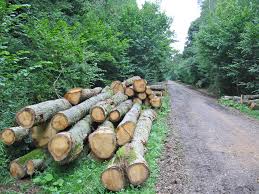 Insects such as sterilizers and termites cause heavy damage to the growing teak plant. In the teak plant usually takes polyporeous zonalis that gargle the root of the plant. Pink-colored fungus digest the plant. Olivia teton and unsinula teton cause powders such as fungals that lead to untimely leaf loss. It becomes necessary to take a prophylactic remedy for the safety of the plant. The juices of fresh leaves of kelotropis procera, detura metal and azadirachta indica prove to be extremely effective in fighting these diseases. Detrimental pests are well eliminated against organic and inorganic compost
Insects such as sterilizers and termites cause heavy damage to the growing teak plant. In the teak plant usually takes polyporeous zonalis that gargle the root of the plant. Pink-colored fungus digest the plant. Olivia teton and unsinula teton cause powders such as fungals that lead to untimely leaf loss. It becomes necessary to take a prophylactic remedy for the safety of the plant. The juices of fresh leaves of kelotropis procera, detura metal and azadirachta indica prove to be extremely effective in fighting these diseases. Detrimental pests are well eliminated against organic and inorganic compost
Note-
How much will it cost to control the existing pests, illness and the plant Please contact your nearest Agriculture Department for its technical evaluation.
Talking about the harvesting of teak-
- Mark on the tree to be harvested and write serial number
- Enter the report with the Chief Regional Forest Officer in this regard
- The Regional Forest Department will prepare the report by sending its officer for investigation
- Sending report to local forest officer about chopping or harvesting
- The process of cutting or harvesting is introduced after the permission is obtained
Peach yield-
A teak tree during 14 years gives 10 to 15 cubic feet wood. The main stem of the teak is usually 25 to 30 feet high and about 35 to 45 inches thicker. 400 teak trees are born close to the advanced variety in one acre. It is necessary to keep an interval of 9/12 feet during plantation.
Marketing of Saganun
The market is extremely demanding for Teakun and it is also extremely easy to sell. There are also local timber markets in addition to the Bay Back Scheme. Teak cultivation is extremely beneficial due to extremely demand in domestic and international market.

